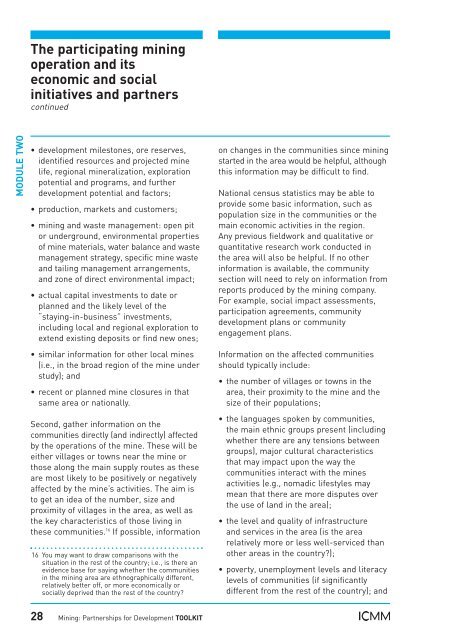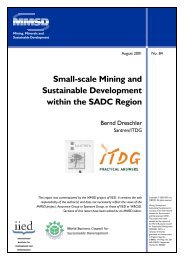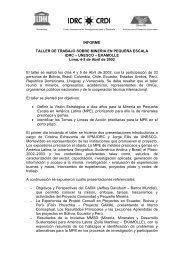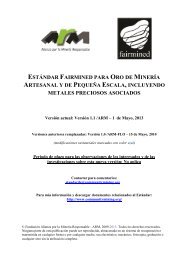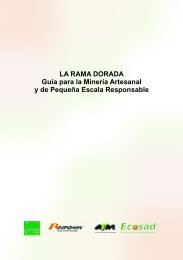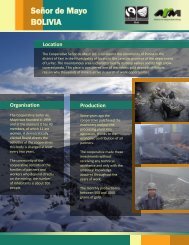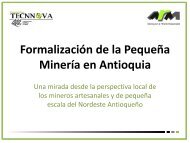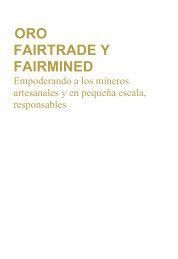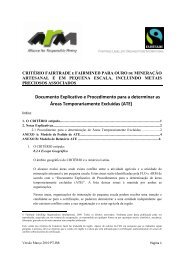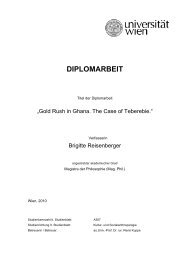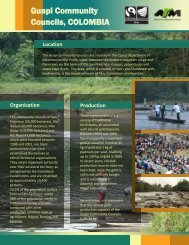Mining: Partnerships for Development Toolkit - Oxford Policy ...
Mining: Partnerships for Development Toolkit - Oxford Policy ...
Mining: Partnerships for Development Toolkit - Oxford Policy ...
Create successful ePaper yourself
Turn your PDF publications into a flip-book with our unique Google optimized e-Paper software.
The participating miningoperation and itseconomic and socialinitiatives and partnerscontinuedMODULE TWO• development milestones, ore reserves,identified resources and projected minelife, regional mineralization, explorationpotential and programs, and furtherdevelopment potential and factors;• production, markets and customers;• mining and waste management: open pitor underground, environmental propertiesof mine materials, water balance and wastemanagement strategy, specific mine wasteand tailing management arrangements,and zone of direct environmental impact;• actual capital investments to date orplanned and the likely level of the“staying-in-business” investments,including local and regional exploration toextend existing deposits or find new ones;• similar in<strong>for</strong>mation <strong>for</strong> other local mines(i.e., in the broad region of the mine understudy); and• recent or planned mine closures in thatsame area or nationally.Second, gather in<strong>for</strong>mation on thecommunities directly (and indirectly) affectedby the operations of the mine. These will beeither villages or towns near the mine orthose along the main supply routes as theseare most likely to be positively or negativelyaffected by the mine’s activities. The aim isto get an idea of the number, size andproximity of villages in the area, as well asthe key characteristics of those living inthese communities. 16 If possible, in<strong>for</strong>mation16 You may want to draw comparisons with thesituation in the rest of the country; i.e., is there anevidence base <strong>for</strong> saying whether the communitiesin the mining area are ethnographically different,relatively better off, or more economically orsocially deprived than the rest of the country?on changes in the communities since miningstarted in the area would be helpful, althoughthis in<strong>for</strong>mation may be difficult to find.National census statistics may be able toprovide some basic in<strong>for</strong>mation, such aspopulation size in the communities or themain economic activities in the region.Any previous fieldwork and qualitative orquantitative research work conducted inthe area will also be helpful. If no otherin<strong>for</strong>mation is available, the communitysection will need to rely on in<strong>for</strong>mation fromreports produced by the mining company.For example, social impact assessments,participation agreements, communitydevelopment plans or communityengagement plans.In<strong>for</strong>mation on the affected communitiesshould typically include:• the number of villages or towns in thearea, their proximity to the mine and thesize of their populations;• the languages spoken by communities,the main ethnic groups present (includingwhether there are any tensions betweengroups), major cultural characteristicsthat may impact upon the way thecommunities interact with the minesactivities (e.g., nomadic lifestyles maymean that there are more disputes overthe use of land in the area);• the level and quality of infrastructureand services in the area (is the arearelatively more or less well-serviced thanother areas in the country?);• poverty, unemployment levels and literacylevels of communities (if significantlydifferent from the rest of the country); and28 <strong>Mining</strong>: <strong>Partnerships</strong> <strong>for</strong> <strong>Development</strong> TOOLKIT


